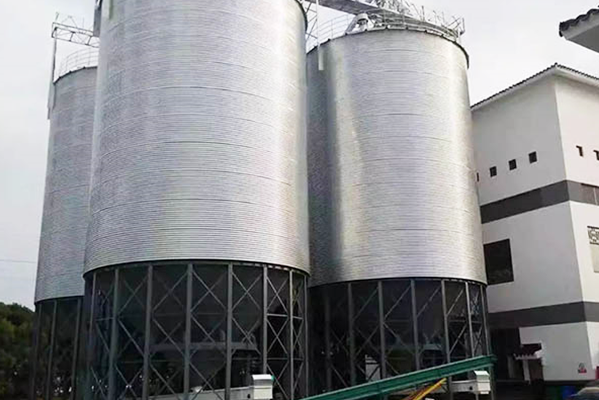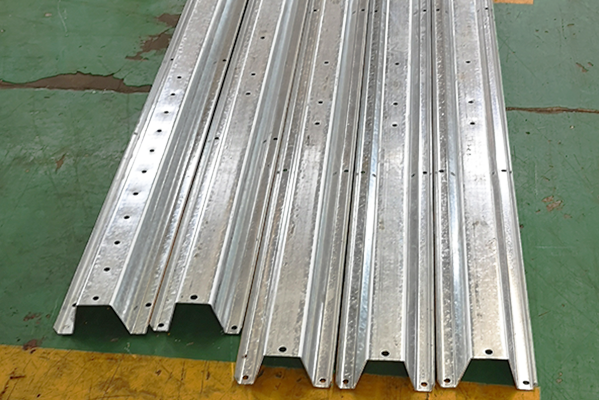Navigation Menu
Contact Us
- Email:
- info@wxavatar.com
- Address:
- Yurong Village, Yuqi Street, Huishan District, Wuxi, China.
Release Date:Mar 15, 2025 Visit:52 Source:Roll Forming Machine Factory
Grain storage and manufacturing equipment play a pivotal role in ensuring the preservation, processing, and efficient utilization of agricultural produce. As the global demand for food continues to rise, the importance of reliable and advanced grain storage solutions cannot be overstated. These systems are designed to maintain the quality of grains, prevent losses, and support the seamless transformation of raw grains into consumable products. To achieve these goals, grain storage and manufacturing equipment operate on several fundamental principles that ensure efficiency, safety, and sustainability.
1. Preservation of Grain Quality
The primary objective of grain storage equipment is to preserve the quality of grains over extended periods. This is achieved by controlling environmental factors such as temperature, humidity, and airflow. Proper ventilation systems are integrated into storage units to prevent the buildup of moisture, which can lead to mold growth and spoilage. Additionally, temperature control mechanisms, such as cooling systems, help mitigate the risk of insect infestations and microbial activity, ensuring that grains remain safe for consumption.

2. Prevention of Contamination
Grain storage and manufacturing equipment are designed to minimize the risk of contamination from pests, dust, and foreign materials. Advanced storage facilities are equipped with airtight seals and filtration systems to keep out insects and rodents. During the manufacturing process, equipment such as cleaners, sorters, and conveyors are used to remove impurities and ensure that only high-quality grains move through the production line.
3. Efficient Handling and Transportation
Efficiency is a key principle in the design of grain storage and manufacturing equipment. Automated systems, such as bucket elevators, conveyors, and pneumatic transporters, are employed to handle and move grains with minimal manual intervention. This not only reduces labor costs but also minimizes the risk of damage to the grains during transportation. Efficient handling systems also contribute to faster processing times, which is crucial for meeting market demands.
4. Scalability and Flexibility
Modern grain storage and manufacturing equipment are designed to be scalable and adaptable to different types of grains and production requirements. Modular storage units and adjustable processing machinery allow farmers and manufacturers to customize their operations based on the volume and type of grains they handle. This flexibility ensures that the equipment can cater to both small-scale and large-scale operations, making it a versatile solution for diverse agricultural needs.
5. Energy Efficiency and Sustainability
As the world moves toward more sustainable practices, grain storage and manufacturing equipment are increasingly being designed with energy efficiency in mind. Innovations such as solar-powered storage units and energy-efficient drying systems help reduce the carbon footprint of grain processing operations. Additionally, the use of durable and recyclable materials in equipment construction contributes to long-term sustainability.
6. Monitoring and Automation
The integration of technology into grain storage and manufacturing equipment has revolutionized the industry. Automated monitoring systems equipped with sensors and IoT (Internet of Things) capabilities allow for real-time tracking of grain conditions, such as temperature, humidity, and pest activity. This data-driven approach enables timely interventions, reducing the risk of spoilage and ensuring optimal storage conditions. Automation also enhances precision in manufacturing processes, leading to consistent product quality.
7. Safety and Compliance
Safety is a critical consideration in the design and operation of grain storage and manufacturing equipment. Facilities must comply with industry standards and regulations to ensure the safety of workers and the quality of the grains. Features such as explosion-proof systems in storage units and ergonomic designs in manufacturing equipment help mitigate risks and create a safer working environment.

Grain Storage and Manufacturing Equipment: A Foundation for Food Security
In conclusion, grain storage and manufacturing equipment are essential components of the agricultural supply chain, ensuring that grains are preserved, processed, and delivered efficiently. By adhering to principles such as quality preservation, contamination prevention, efficient handling, scalability, sustainability, automation, and safety, these systems play a crucial role in supporting global food security. As technology continues to advance, grain storage and manufacturing equipment will evolve to meet the growing demands of a changing world, ensuring that the journey from farm to table remains seamless and sustainable.